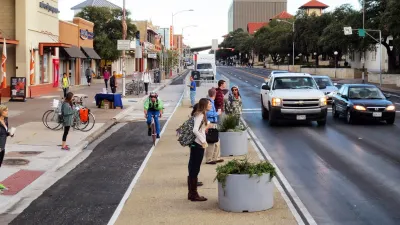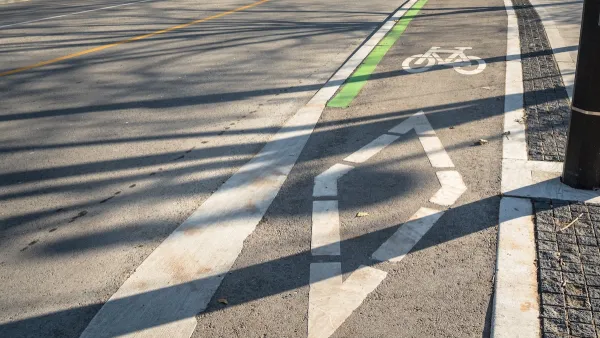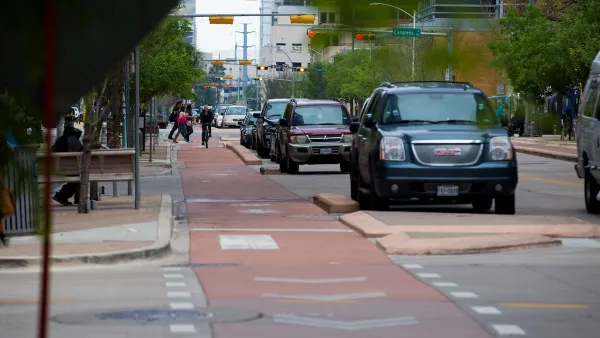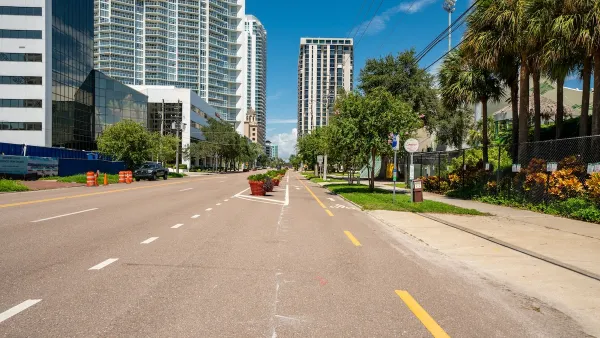The needs that drive complete streets policy are as unique as the communities they have taken root, but effective complete streets programs do share a few common traits.

"The concept of complete streets places the same priority on pedestrians, bicyclists and public transport users as on motorists," according to an article by Anna Bray Sharpin, Ben Welle, and Nikita Luke for TheCityFix that provides a guide to the core components of complete streets in the many global examples of complete streets programs. There are a lot of examples to choose from, according to the article, as "more than 1,140 agencies at the local, regional, and state levels have adopted complete streets policies in the United States, totalling more than 1,200 policies nationwide." And the idea has been translated around the world. "They are the so-called calles completas in Mexico, ruas completas in Brazil, and “streets for all” in India."
The post lists eight key elements to complete streets, listed below but detailed with more specificity in the article:
- An Active Streetscape
- Pedestrian-Scale Lighting
- Green Infrastructure
- Street Furniture
- Bicycle Facilities
- Signage
- Accessibility for All
- Surface Types
FULL STORY: What Makes a Complete Street? A Brief Guide

Analysis: Cybertruck Fatality Rate Far Exceeds That of Ford Pinto
The Tesla Cybertruck was recalled seven times last year.

National Parks Layoffs Will Cause Communities to Lose Billions
Thousands of essential park workers were laid off this week, just before the busy spring break season.

Retro-silient?: America’s First “Eco-burb,” The Woodlands Turns 50
A master-planned community north of Houston offers lessons on green infrastructure and resilient design, but falls short of its founder’s lofty affordability and walkability goals.

Test News Post 1
This is a summary

Analysis: Cybertruck Fatality Rate Far Exceeds That of Ford Pinto
The Tesla Cybertruck was recalled seven times last year.

Test News Headline 46
Test for the image on the front page.
Urban Design for Planners 1: Software Tools
This six-course series explores essential urban design concepts using open source software and equips planners with the tools they need to participate fully in the urban design process.
Planning for Universal Design
Learn the tools for implementing Universal Design in planning regulations.
EMC Planning Group, Inc.
Planetizen
Planetizen
Mpact (formerly Rail~Volution)
Great Falls Development Authority, Inc.
HUDs Office of Policy Development and Research
NYU Wagner Graduate School of Public Service




























